How to Draw Pine Tree Bark
Trees have always been an alluring aspect of our world. They have been popular in the art world as a subject to draw or paint, or simply as a muse. Today our tutorial is all about how to draw two types of trees – an Oak-like tree as well as a pine tree. We will guide you with each step in the process of tree drawing in a comprehensive manner so that by the end, you will have not one, but two magnificent tree sketches in front of you. After this tutorial, you will be equipped with the know-how to adapt you are new-found drawing knowledge and skills into your artworks.
Table of Contents
- 1 Tree Talk
- 2 Tutorial for Drawing an Oak Tree
- 2.1 Step 1: The Tree Trunk Construction
- 2.2 Step 2: The Construction of the Branches
- 2.3 Step 3: Finding the Baseline
- 2.4 Step 4: Constructing how Your Tree Will Arch
- 2.5 Step 5: The Tree Trunk Construction
- 2.6 Step 6: Detailing Your Tree Trunk with Bark
- 2.7 Step 7: Creating the Shape of the trees Canopy
- 2.8 Step 8: Adding Leaves in Your Tree Canopy
- 2.9 Step 9: Adding Detail to Your Tree Branches
- 2.10 Step 10: Adding the First Splashes of Color
- 2.11 Step 11: Shadows and Highlights on Your Trunk and Branches
- 2.12 Step 12: Coloring Your Tree Canopy
- 2.13 Step 13: Adding Shadows and Highlights to Your Trees Canopy
- 2.14 Step 14: Finishing With the Shadows and Highlights
- 3 Drawing a Pine Tree Tutorial
- 3.1 Step 1: The Main Tree Trunk Construction
- 3.2 Step 2: Adding Roots to Your Pine Tree
- 3.3 Step 3: Creating the Basic Shape of Your Pine Tree
- 3.4 Step 4: Adding the Outline of the Pine Trees Roots
- 3.5 Step 5: Detailing the Tree Trunk with Bark
- 3.6 Step 6: Constructing the Branches
- 3.7 Step 7: Outlining Your Branches
- 3.8 Step 8: Final Details and Outlines
- 3.9 Step 9: Coloring the Pine Trees Trunk
- 3.10 Step 10: The Highlights and Shadows of the Trunk
- 3.11 Step 11: Coloring Your Pine Trees Needles
- 3.12 Step 12: Adding Shading to the Conifer Canopy
- 3.13 Step 13: Finishing Up
- 4 Frequently Asked Questions
- 4.1 Are Trees Difficult to Draw?
- 4.2 Does a Conifer Tree Require Construction Lines to Draw?
- 4.3 Is This Tree Drawing Tutorial for Anyone?
Tree Talk
All trees are magnificent. They reflect our seasons and serve as a reminder of time passing by. Because of their mesmerizing nature, they are symbolic of a lot of things, but generally, they represent strength and resilience for many cultures across the globe.
Did you know that pine trees are also called Conifer trees? Its sap is extracted to make varnishes, resins, and certain paint sealers. Pine trees are native to northern hemisphere regions and they tend to be quite dominant and even in their native habitat they tend to take over forests. This can be seen by how fast they grow and how tall they become – although they are prone to get damaged by the wind because of their height.
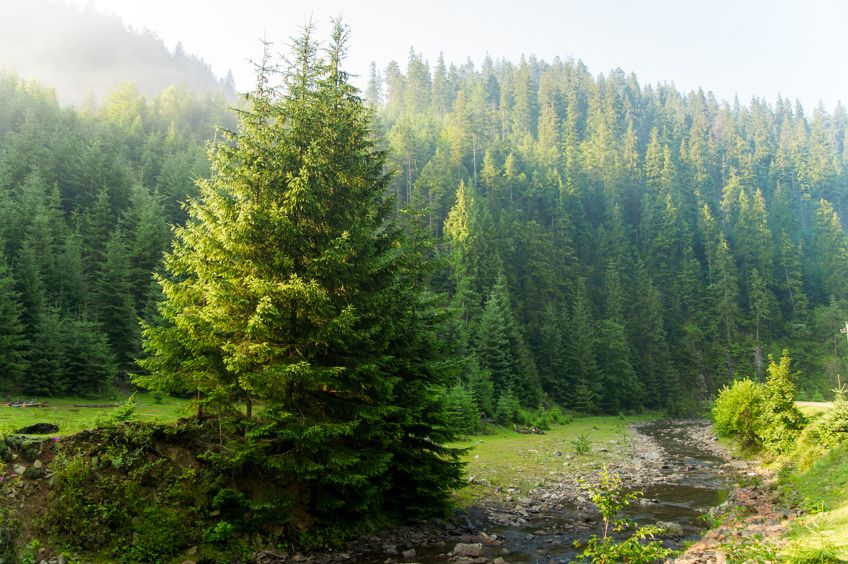
Oak trees are deciduous, meaning they do drop their leaves for winter, but they put that off for quite a while after other deciduous trees, their leaves only changing color a bit later on in Autumn – closer to Winter. Oak has provided us with beautiful wooden furniture but, is often used in the alcohol industry, taking form as a barrel to store the alcohol while it distills.
Tutorial for Drawing an Oak Tree
It is time to get out your favorite sweatpants, crank up that playlist that just makes you feel nostalgic, we are about to embark on an instructable journey of how to draw a tree easily (yes… pun intended). Get comfortable – your day of drawing trees awaits!
Step 1: The Tree Trunk Construction
In terms of drawing trees, the first construction line you must add is a single vertical line. This will be a representation of the trunk of the tree. The length of the line will determine the height of your tree. There is more to come with this tutorial, so make sure you have room to add in more construction shapes and lines for the rest of the tree drawing. Construction lines and shapes are there to help with the proportions of your tree – or whatever you are drawing for that matter.
Remember to make your construction lines quite faint so you can get rid of them when you need to. We advise using a 4H to a 6H pencil because they are very faint.
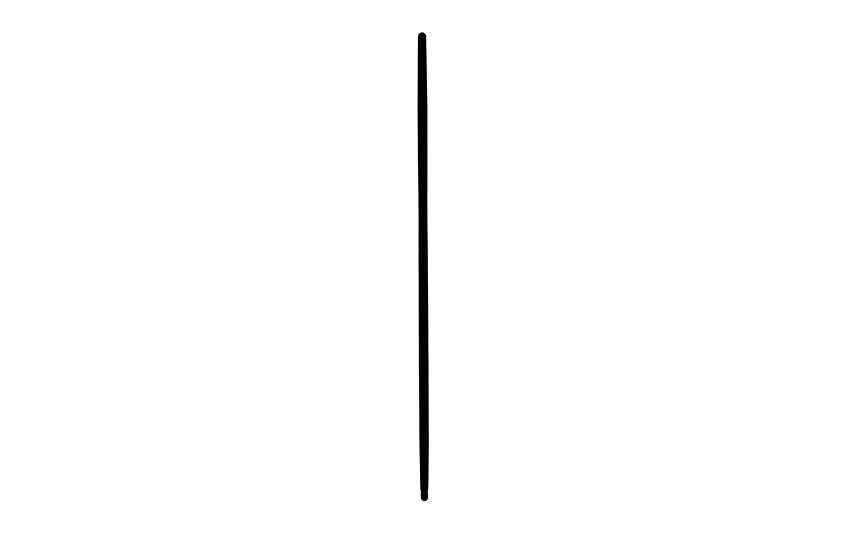
Step 2: The Construction of the Branches
Now that you have the construction line of the tree's trunk setup, you can start with the tree branch drawing section. The construction lines for tree branch drawing will help you get their placement correct so that it looks more realistic – this part is usually quite tricky without them. You can start drawing the branches' construction lines from about a quarter-way up the trunk's line, leaving out the first quarter for the part of the trunk that has no branches. The lines must be curvy and they can split into two branches here and there but not too many or your tree will be too busy. Also, try not to let it look too symmetrical because that is unrealistic.
The branches at the bottom must droop slightly, as the shade providers, which can be shown by drawing them at a more horizontal angle. Gradually, you can draw them going more vertically towards the top.
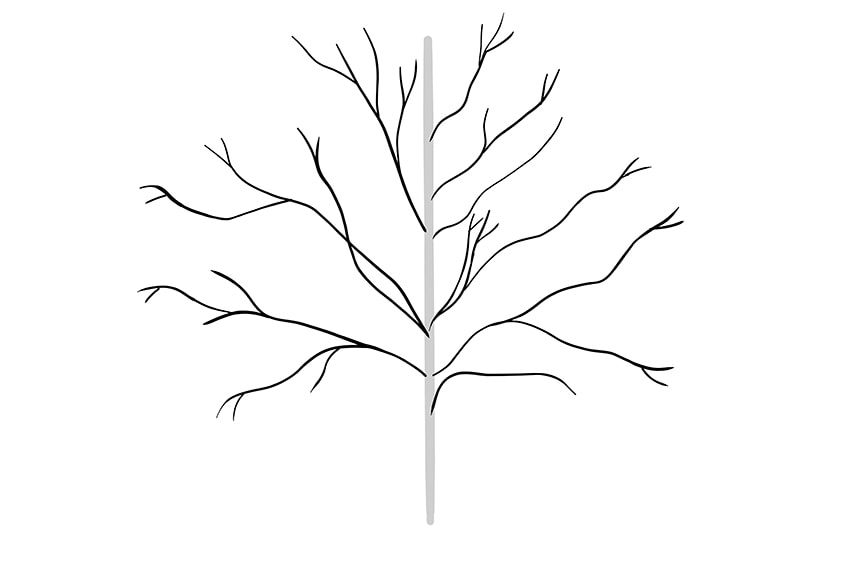
Step 3: Finding the Baseline
This step will be appreciated in the end, it adds a natural flair to your tree sketch by accentuating the natural bow of the tree – meaning its curve or shape. This is done by drawing a horizontal line across your tree, placed just below the lowest branches. See our example below as a reference.
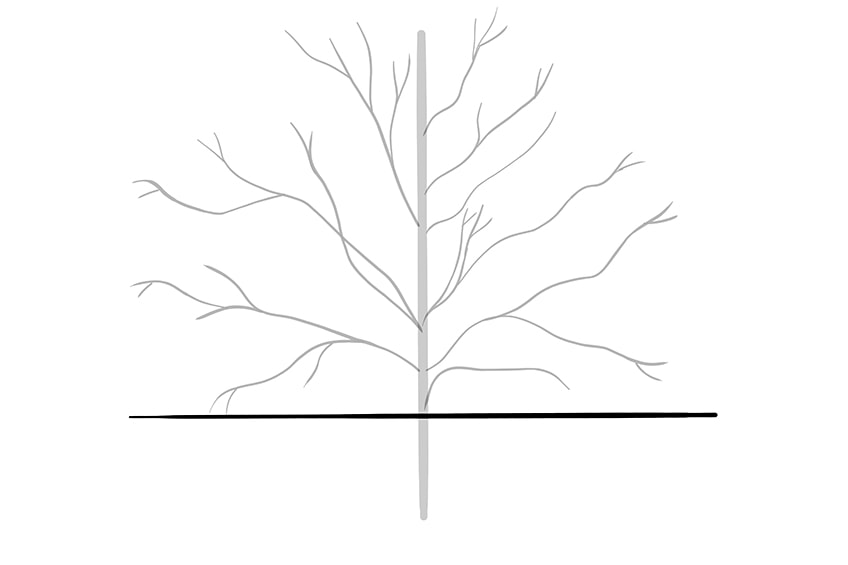
Step 4: Constructing how Your Tree Will Arch
This step will be making use of the baseline you drew in step three, it will keep your tree in line with the intended shape you wanted for it. Starting on the end of the baseline on the left-hand side, arching upwards and over the construction lines for the branches, and finishing at the other end of the baseline on the right-hand side.
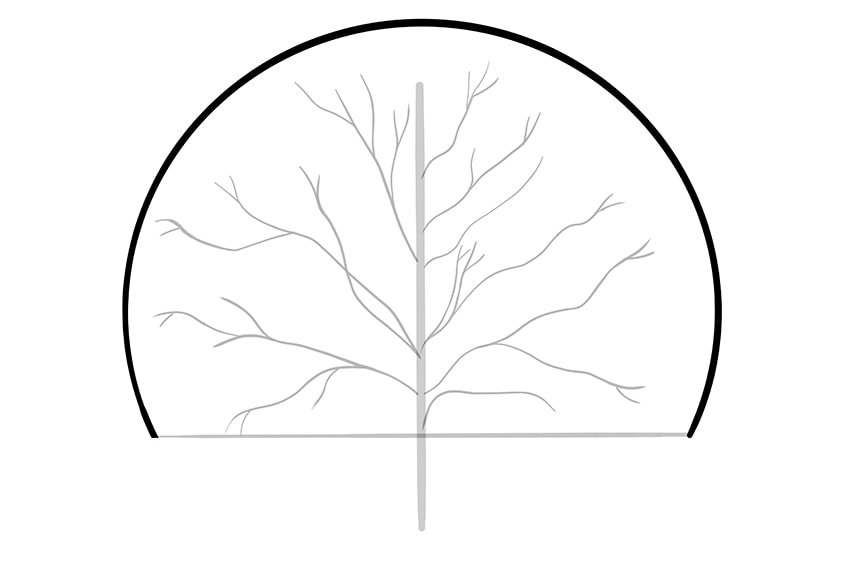
Step 5: The Tree Trunk Construction
You might think that this step is going to be the easiest – besides the first vertical line in step one. This is not a matter of two lines that run parallel to each other to make the base of the trunk. There is more to it than that and it is very important to get it right or the whole tree will look odd. Few trees have a straight trunk – except for maybe the Pine tree, which we will be working with later. This tree has a more curvy trunk and it starts from just underneath the baseline.
As you can see from our example, we have shown a hint of roots growing by drawing some smaller lines inside the trunk, at the bottom.
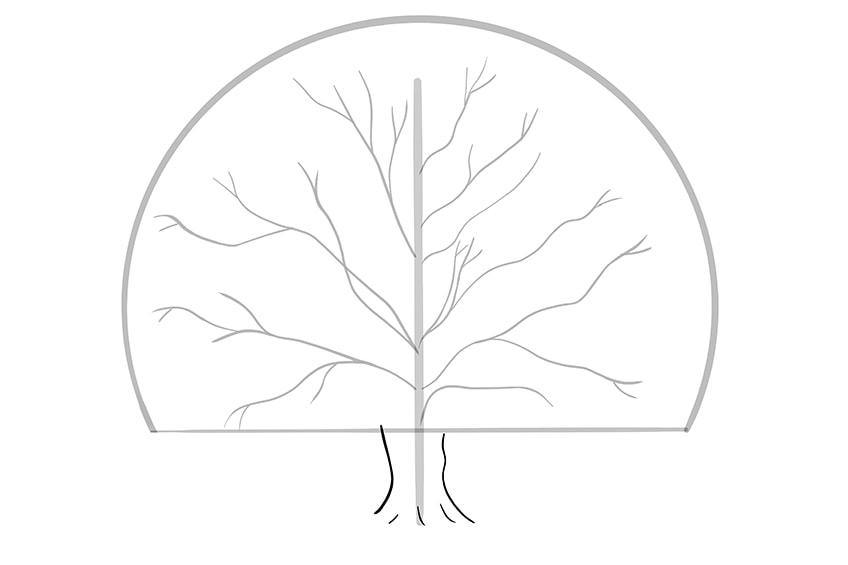
Step 6: Detailing Your Tree Trunk with Bark
Now that your trunk is laid out in all of its fine voluptuousness, we can begin with adding all of the finer details to make it look super realistic. You begin this step by drawing some fine lines going upwards, in the direction of the trunk. These will represent the curves that the bark makes on the trunk.
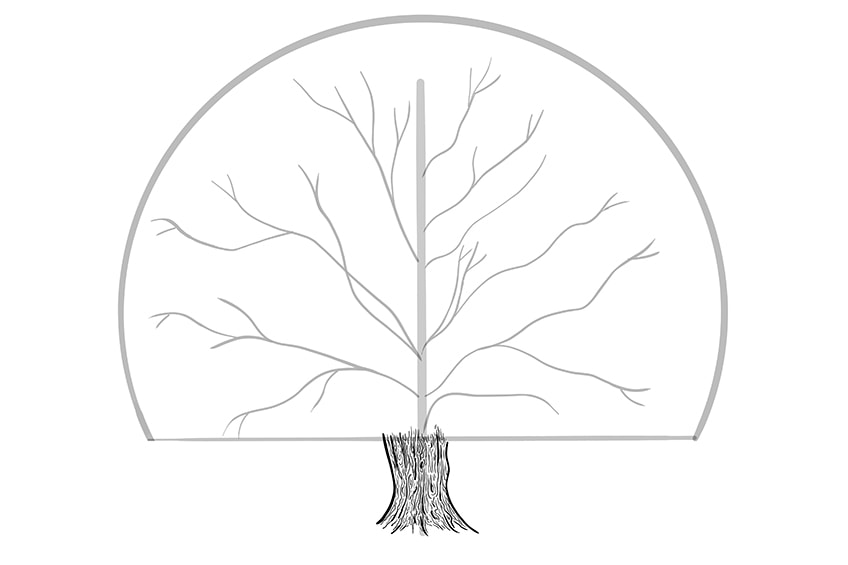
To get the detailing of the bark just right you must have lots of very fine lines that are tightly packed in between the previous ones you drew. that run in the direction of the tree's trunk. It might start to resemble a print of a finger.
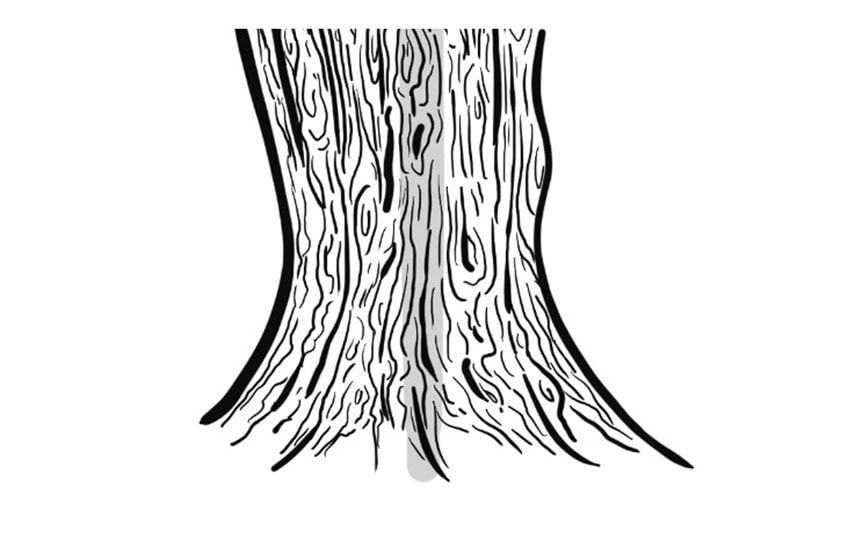
A good tip to get this done accurately is that not all of your very fine lines have to be straight. Some of the lines can curve around at the bottom, or loop over at the top. This adds a realistic flare to the bark of your tree.
Step 7: Creating the Shape of the trees Canopy
In terms of drawing trees, the canopy is probably the most eye-catching part of the drawing. We will be outlining the canopy by using the construction lines we drew in steps three and four. Starting from either side, it is your choice. Start by drawing from the place where the base of the trunk meets with the baseline.
Because the tree is quite a leafy one, the canopy will bear many leaves and your outline must represent that. You can do this by drawing a line that runs continuously following the beeline and the arch line, all the way until you get to the other side of the trunk. The line must be jagged and curvy and it must drop in and out of the arch line – like seeing leaves from a distance.
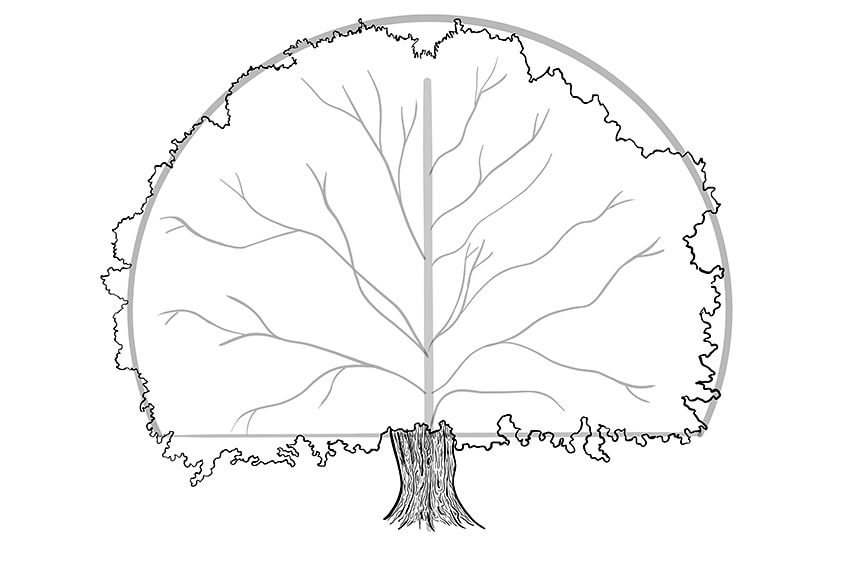
When this step is complete you can remove the vertical and the horizontal construction lines from your tree branch drawing in step two ut, do not remove the branch lines.
Step 8: Adding Leaves in Your Tree Canopy
This part gives way to your artistic freedom. Your tree drawing will not be fully covered in leaves. A realistic drawing will have a few spaces that will show the branches peeping through. To get this right, all you have to do is draw a few curvy and oddly shaped patches over the branches' construction lines, wherever you want. Once you have chosen where the branches will be visible, you can erase the rest of the branches' construction lines – but not within the patches you just drew.
You can get the effect of the leaves quite accurately by simply drawing hundreds of tiny curved strokes with your pencil – they do not have to be perfect as long as they are small. Do not draw the leaves within the patches you left bare for the branches to show through.
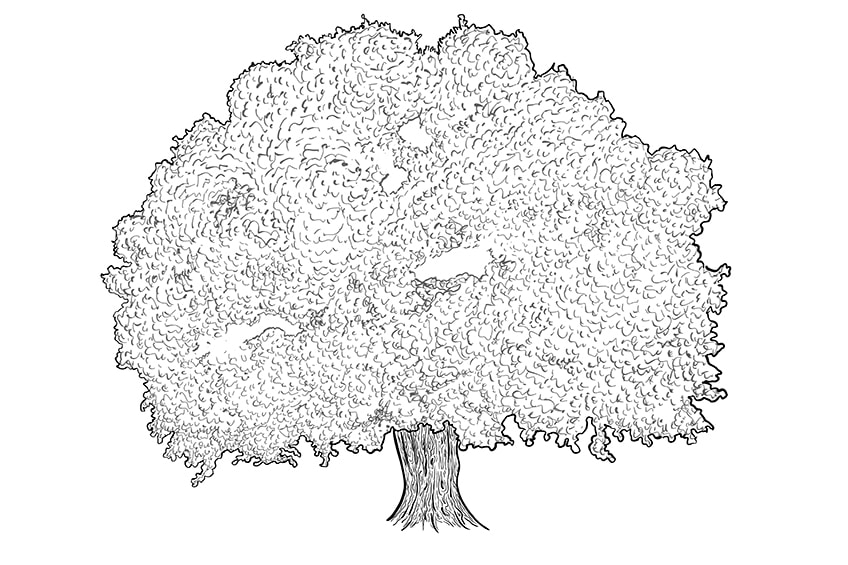
Step 9: Adding Detail to Your Tree Branches
This next step is about filling in the patches you left without any leaves. It is a real game-changer in terms of how to draw a tree easily but make it look realistic. You can use the branches' construction lines that are still visible if you like their structure, or you can draw them free-hand.
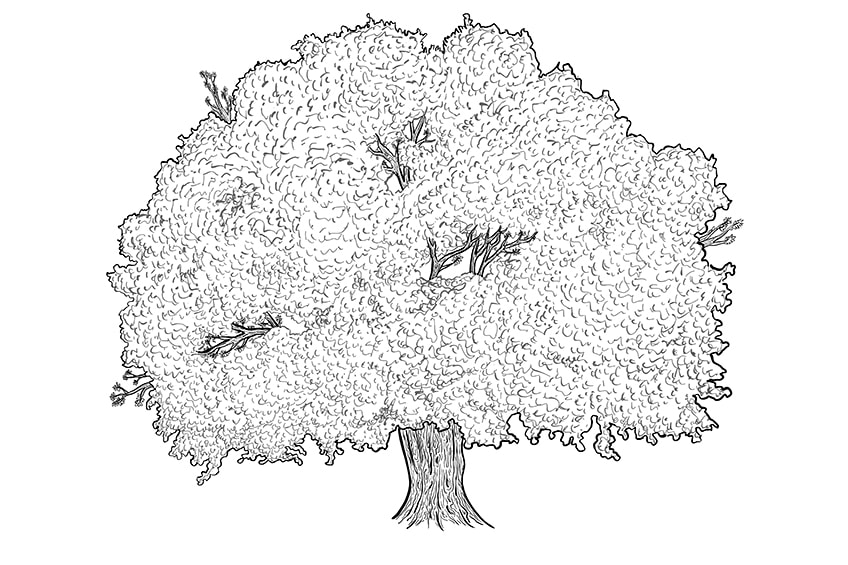
The branches should have curved lines that reach out in different directions and contain the same fine lines for the bark detailing. If you draw any branches poking out from the top of the canopy, which we suggest, you must add some leaves to the end of those branches for some intricate realism
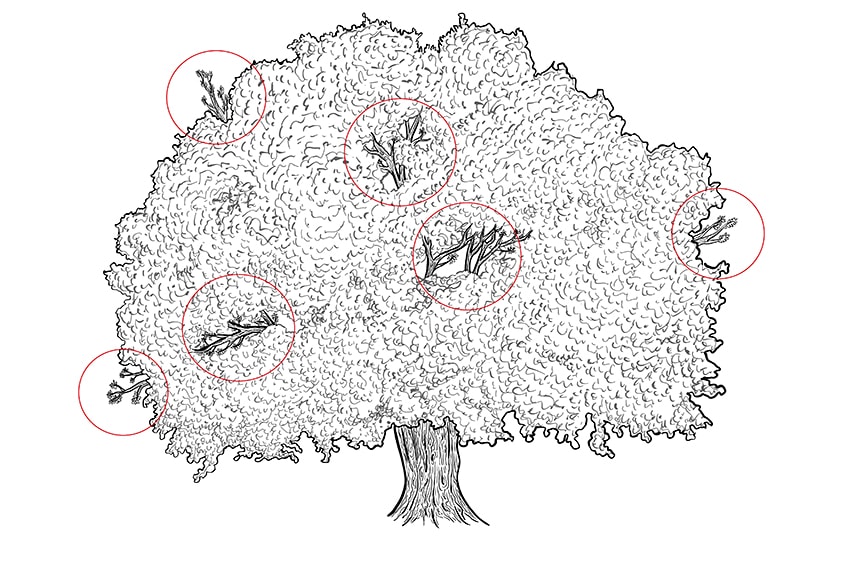
Step 10: Adding the First Splashes of Color
Now that all of the fine lines and details of your tree are finished, you can take a moment to appreciate your work, or you can dive right in and add some color to your creation. In this step, you can use whatever coloring method you prefer, whether it is pencil crayons, acrylic paint, or watercolors. Your trunk should be a brown color, but you can choose the shade. Because our example is a tree that looks much like an oak tree, we decided to use a fairly dark brown to replicate the richness of the bark's color.
Do take note that it is much easier to make your tree darker by adding a darker shade later on, but it is always advisable to start with a lighter shade.
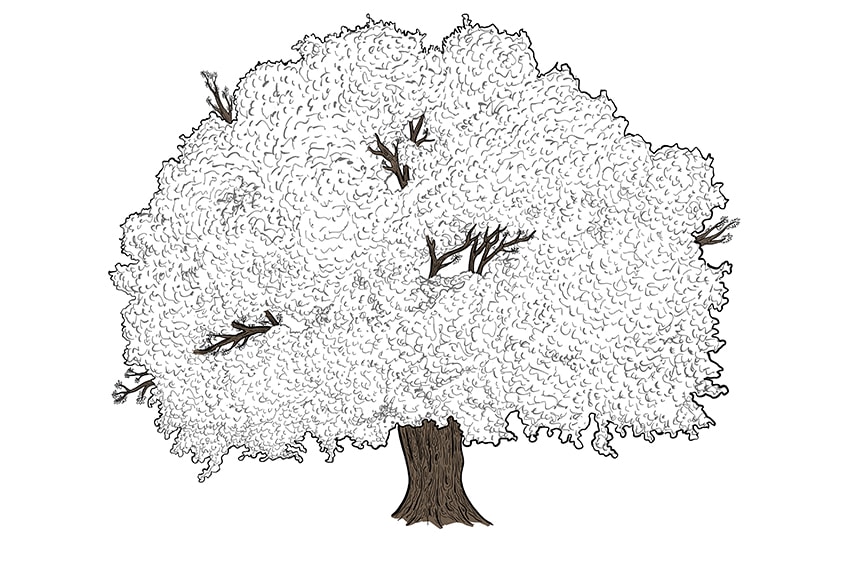
Step 11: Shadows and Highlights on Your Trunk and Branches
The reason for suggesting that you start with a lighter brown is in this next step where you will be adding the highlights and the shadows within the bark of your tree. Start by using a darker brown than the one you initially colored your tree's trunk and draw, or color, some dark lines that run with the detailing lines you made in step six. Next, you can take a much lighter shade and add some highlights the same way you added the shadows.
Take time with this step, it will make your tree pop in the end.
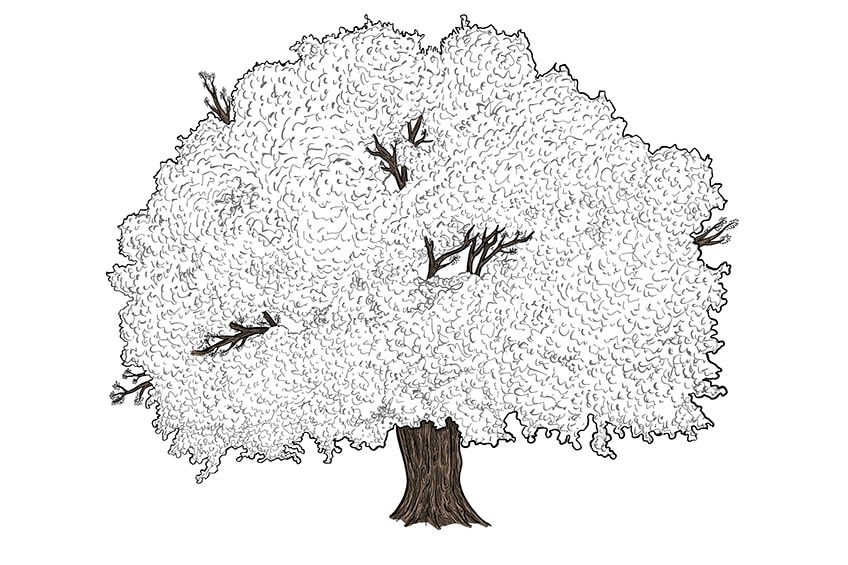
Step 12: Coloring Your Tree Canopy
This step is fairly simple, but it can be a little time-consuming if you have drawn a large canopy for your tree – unless you are using a drawing tablet of course. To add the green coloring to your leaves in the tree's canopy, start by coloring it a monochrome green. Remember, the same rule applies to the coloring of the leaves as it does with the coloring of the trunk and branches. This means start with a medium shade of green – you will work your way darker or lighter.
Do not forget the tiny leaves on the branches poking out at the top!
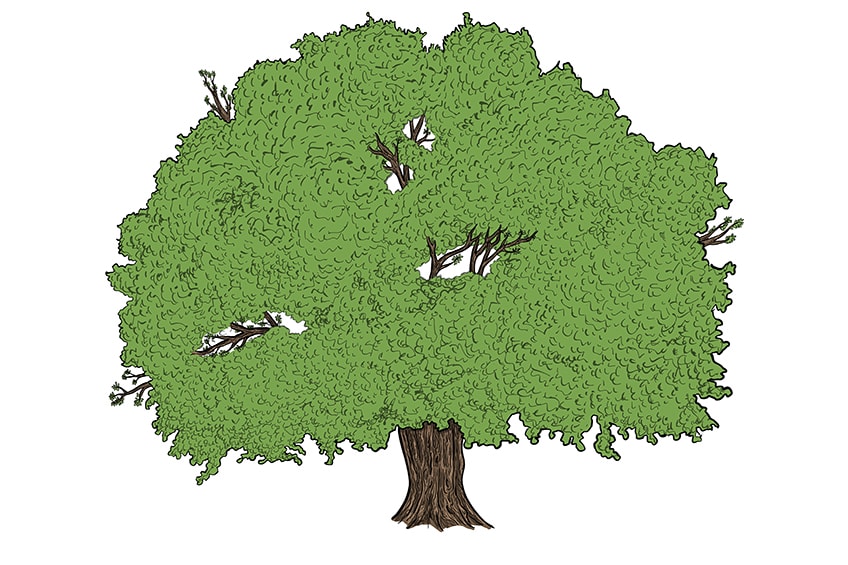
Step 13: Adding Shadows and Highlights to Your Trees Canopy
This step is quite similar to the previous step, but instead of dark and light brown, you will be working with dark and light green. When you add shadows and highlights, it is a good idea to start with the shadow because they are in the background and the highlights are more in the foreground so they should be added last.
This is best done by drawing lots of tiny "C" shapes in certain areas that will emphasize how patches of the canopy are popping out.
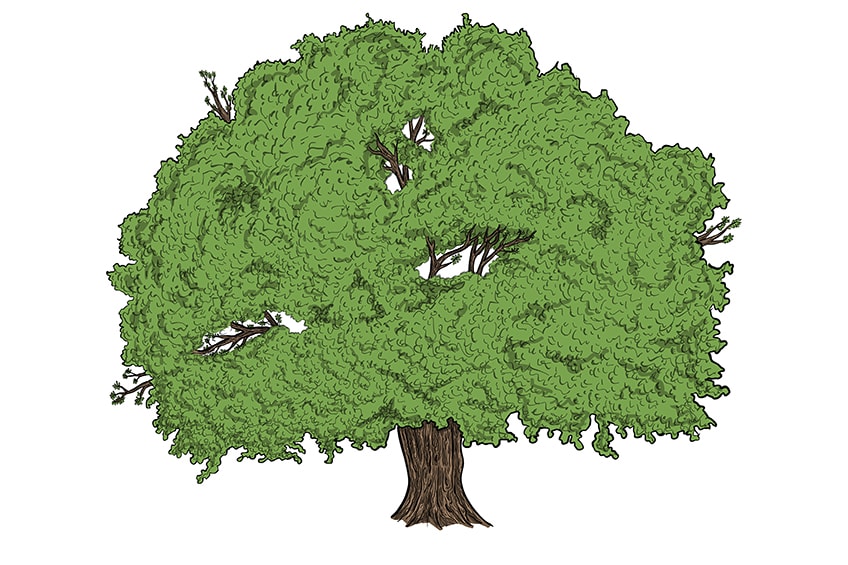
Step 14: Finishing With the Shadows and Highlights
This step makes your tree look like it is glowing. All that you need to do is add a light layer of pale grey color in and around your tree's canopy. Make sure that you work with the shadows that you added in the previous step. The aim is to make it look like certain areas of the canopy's leaves are popping out.
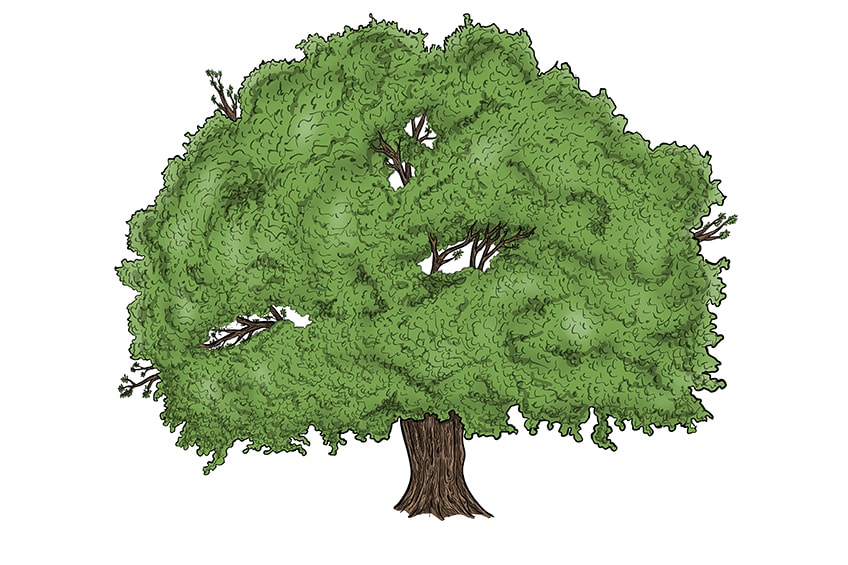
Take a step back once you have finished all of the above steps and have a good look at your efforts. This is an amazing achievement, so let us see if you can do more! Up next is our second tutorial on how to draw a Pine Tree!
Drawing a Pine Tree Tutorial
Now that you know how to draw a tree that looks like an Oak tree, you might be interested in learning a second type of tree, specifically the Pine tree – also known as the conifer tree. If you had just finished with your oak tree, you might want to stand up and do a little dance to get your blood flowing, get some tea or coffee, and get comfortable yet again for our second tree drawing tutorial.
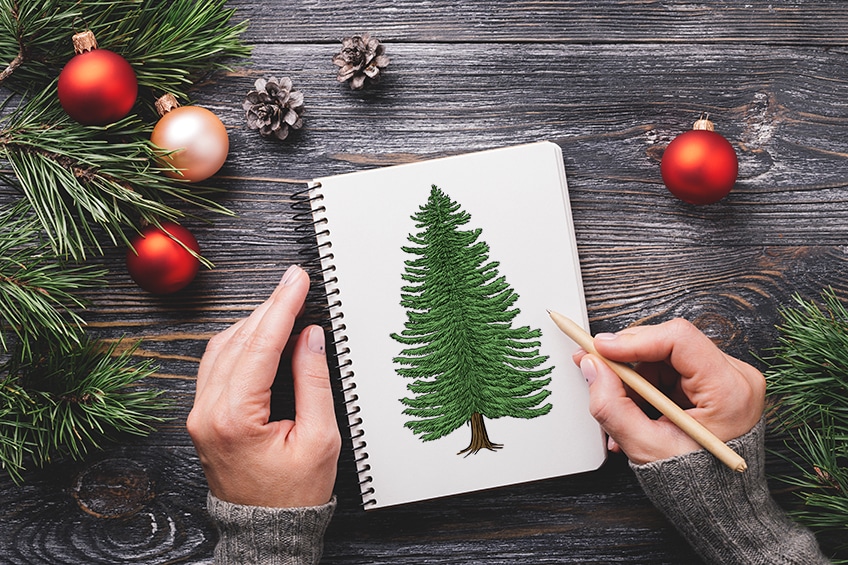
Step 1: The Main Tree Trunk Construction
This tree's tutorial starts pretty much the same as the previous tutorial. Draw a vertical line in the middle of the page you are drawing on, or the middle of your tablet's drawing pad. This construction line is there to represent the trunk of the tree and the length of the line will define the height of the tree.
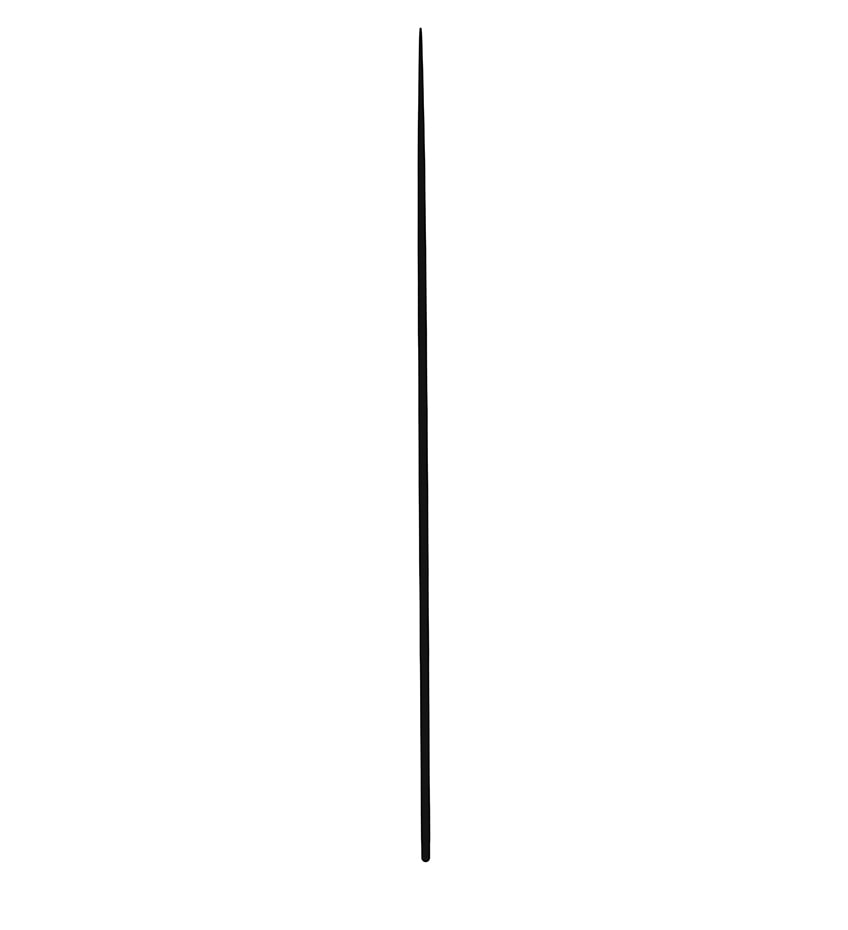
Step 2: Adding Roots to Your Pine Tree
This is a very simple step. All that you need to do is draw some lines protruding out from the base of your vertical line. They should go out in every direction. Remember to draw these lines white faint so that they are not visible once you erase them later on.
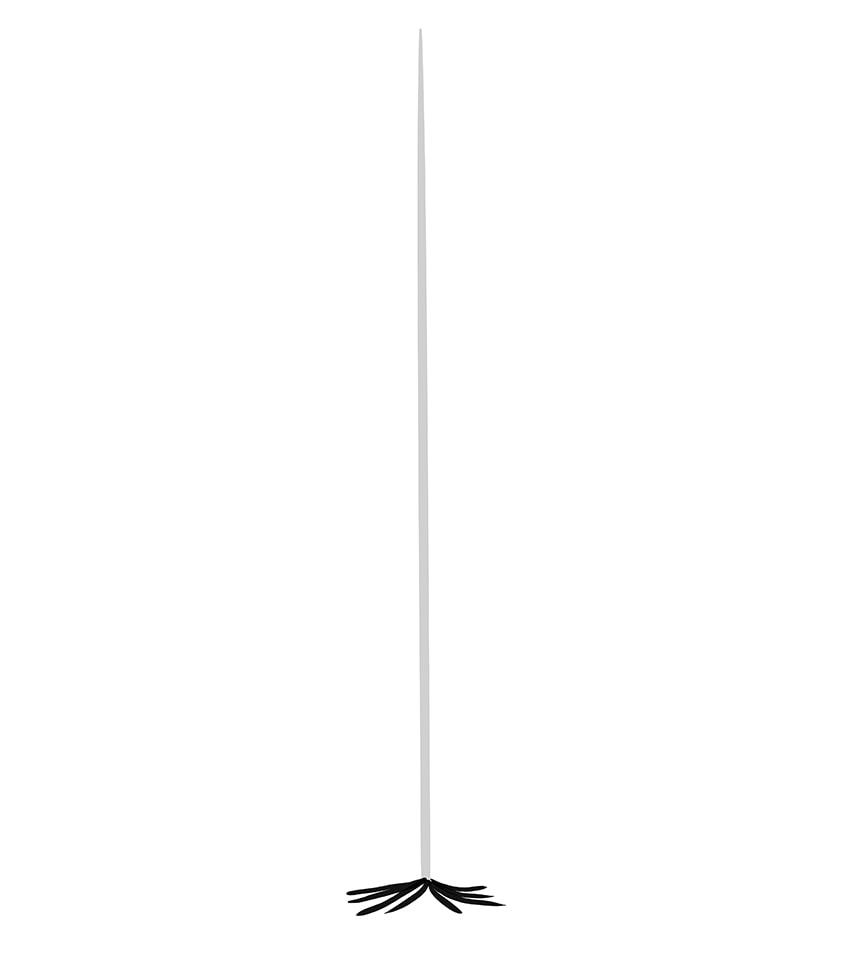
Step 3: Creating the Basic Shape of Your Pine Tree
Sometimes getting the shape right can be deceivingly difficult. To make it easier, we suggest drawing a triangle construction shape with the top point of the triangle meeting at the top of your vertical construction line. Let the base of the triangle start from a few spaces above the roots and it should be symmetrically placed on either side of the trunk's construction line.
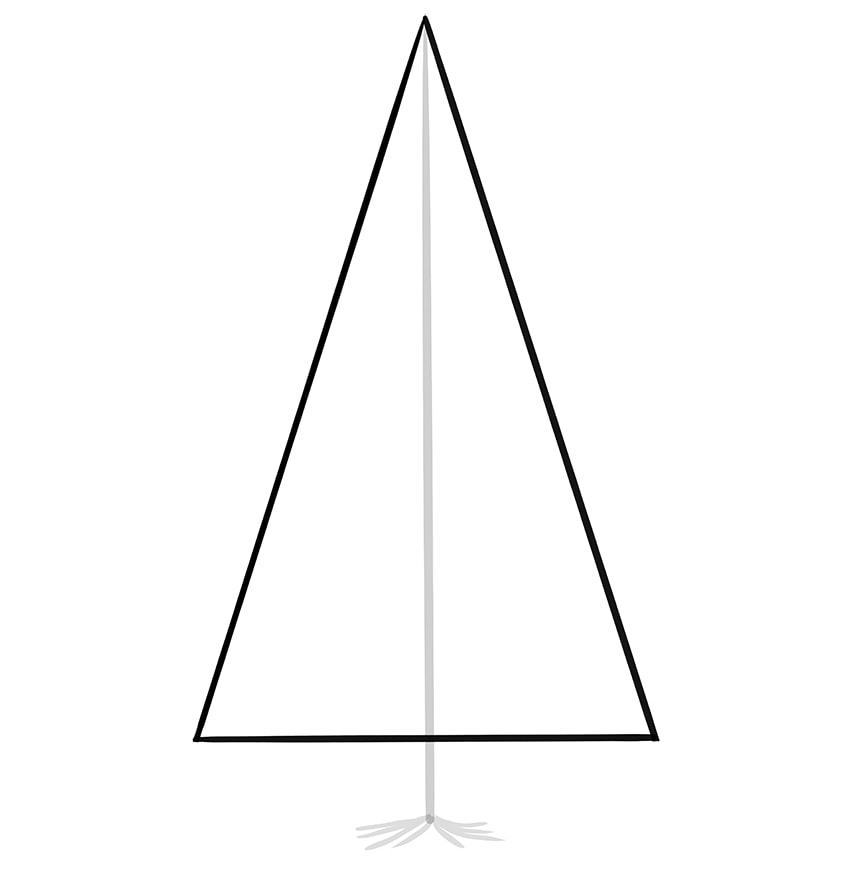
Step 4: Adding the Outline of the Pine Trees Roots
To draw the outline for the pine tree's trunk and roots, start on the left-hand side of the vertical line and draw a line starting from the base of the triangle, right next to the vertical line, going downwards (quite close to the vertical line) and let it curve out towards the closest root line. On the other side, you can start slightly further away if you wish and let this side be slightly more gracious with its curve.
Once your trunk is done you can add the outline of the roots by drawing finer lines that end in sharper points.
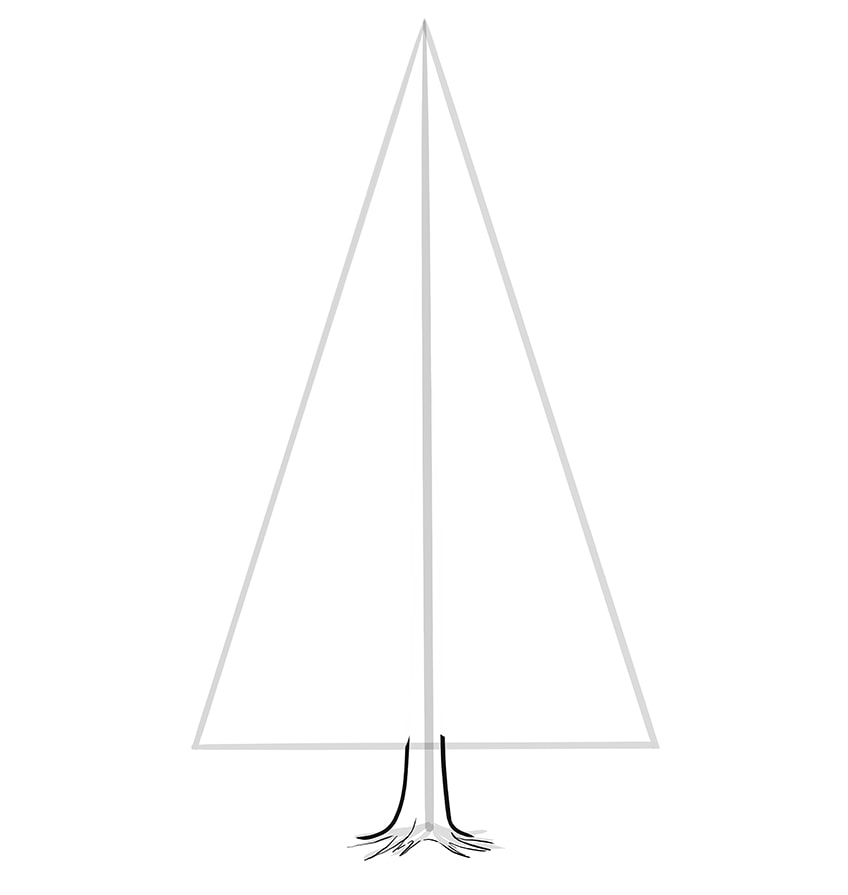
Step 5: Detailing the Tree Trunk with Bark
It is time to add some textural detail to the trunk of your conifer tree. You can easily add this bark texture by drawing a combination of long, short, and medium wavy lines inside the tree trunk. Remember to follow the general outline of the tree trunk, and keep these lines separate. This step is simpler than the bark detail you added for the ok tree in the above tutorial. The lines you draw for the bark's detail can be a mixture of long and short lines that are mostly straight with an air of waviness near the roots.
Make sure that these detailing lines go in the same direction as the tree trunk – Pine trees are typically very straight-trunked.
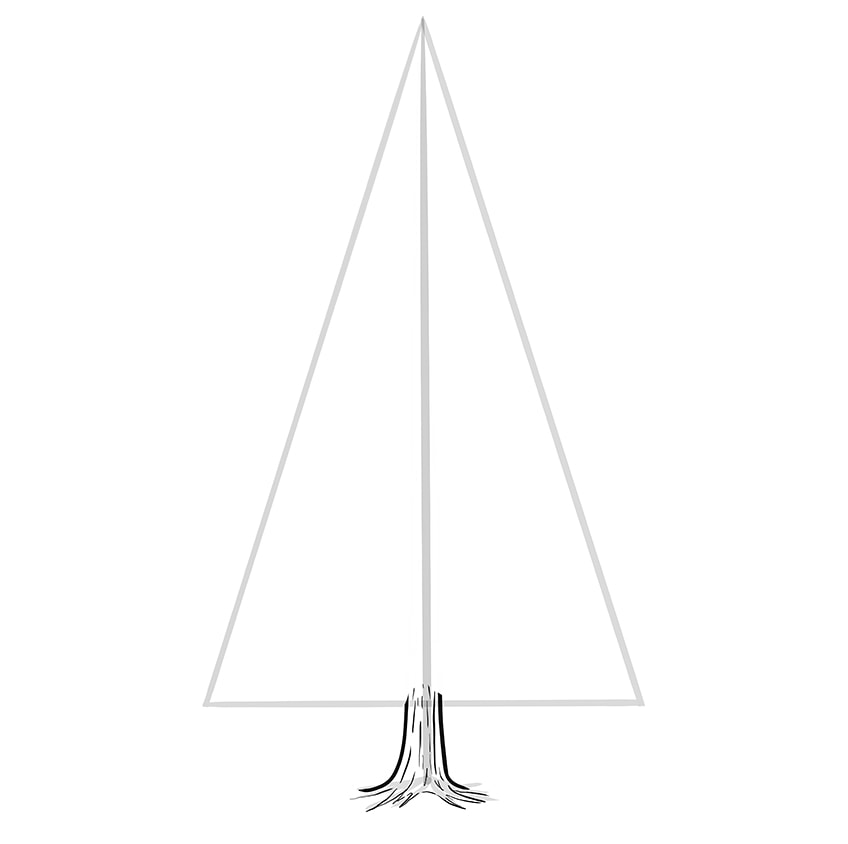
Step 6: Constructing the Branches
Some people find the drawing of pine needles quite intimidating for the amount of detail they have. We will show you how easy it can be, starting with some construction lines for the branches.
Using the triangle construction line that will guide you to an accurate shape of a pine tree. Start from the bottom of the tree and draw lines coming out from the vertical construction line in the middle. These lines should be curvy but in a jagged kind of way. They should extend out to the sides of the triangle which means that gradually, they will get shorter and shorter until the point at the top.
The lines at the bottom of the triangle's base should be angled downwards slightly to represent how the bottom branches tend to droop.
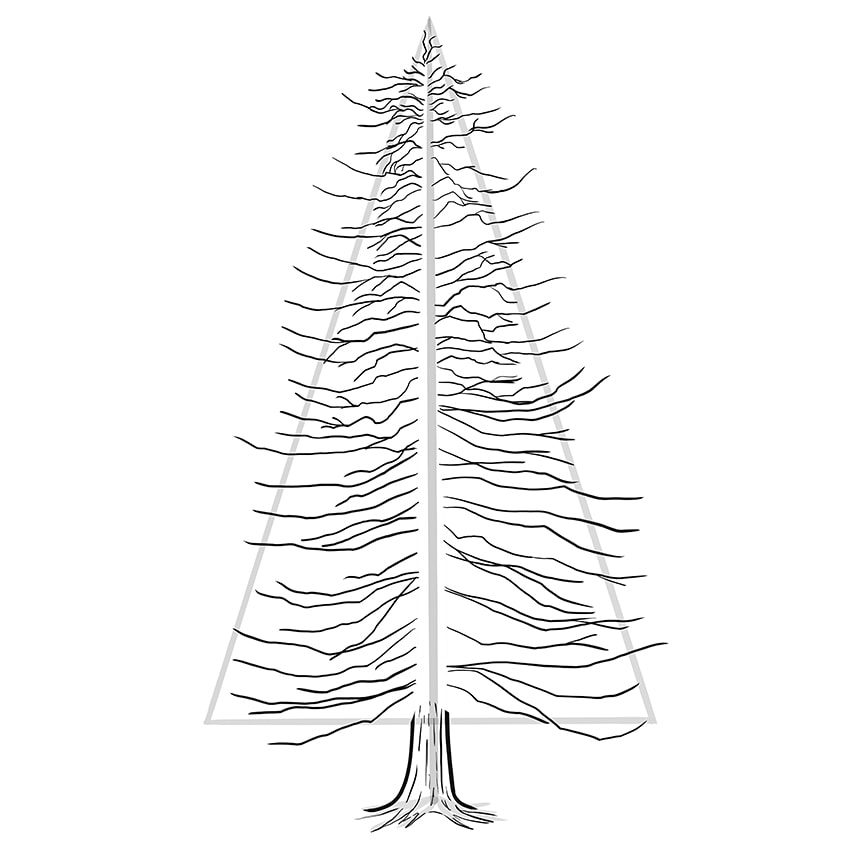
Step 7: Outlining Your Branches
Now for the tree branch drawing of your pine tree! Using the branches' construction lines you drew in the previous step, draw a collection of shapes that look like a "W" to form a pattern that mimics leaves. This is best done by making sure that all of the "W" shapes you draw are facing in different directions – as pine needles do. If you take a look at our example below, you will see that the top of some of the branches is more straight lines than the "W" shape and that some of the branches droop downwards.
A good suggestion is to make sure the construction line for each branch is in the middle of your outline, with a small bit of space on either side.
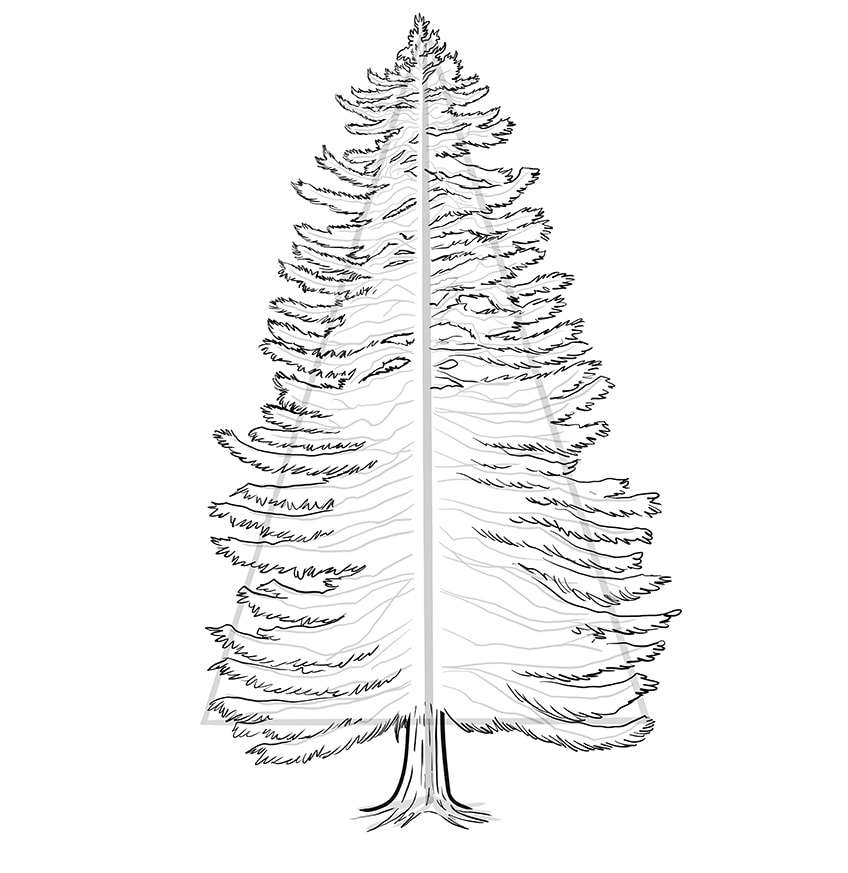
Step 8: Final Details and Outlines
This next step is going to show how the branches of a pine tree extend from all angles, 360 degrees around the trunk. Using the outlines of the branches you made in the previous step, connect them across the middle of the tree where the vertical line was.
For this step, you will be making use of the same "W" pattern but you can make some of them slightly bigger than on the outer branches. This will represent the branches that are reaching out towards you – adding depth. Some of the outlines can connect in the middle forming an up-side-down, wide "V" shape.
Once you are satisfied, you can use your eraser to get rid of the construction lines.
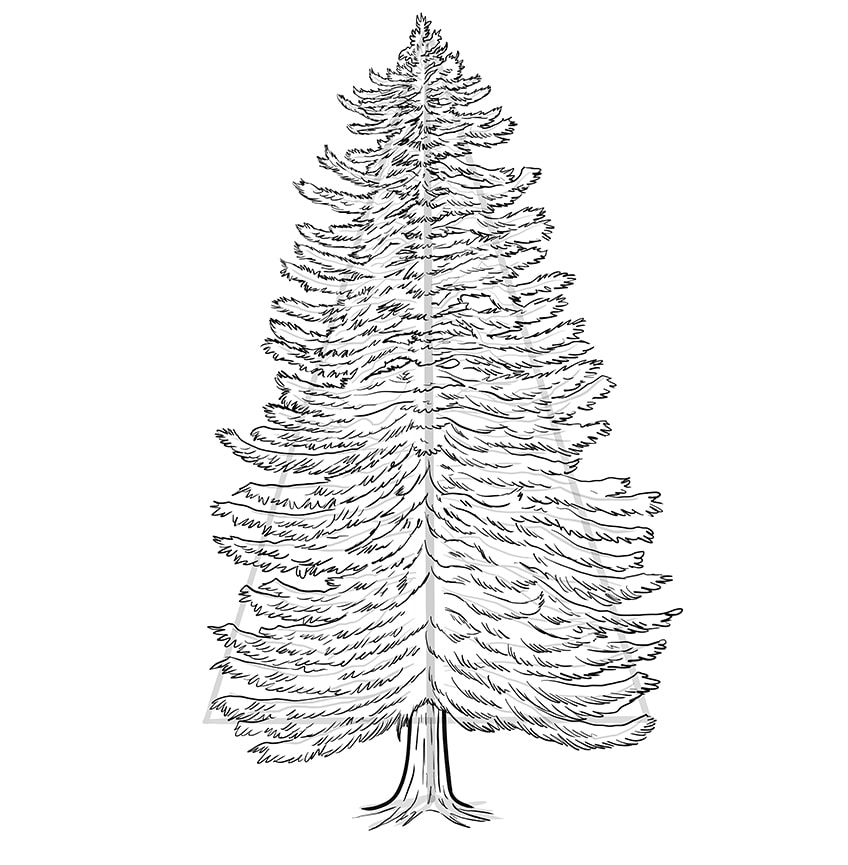
Step 9: Coloring the Pine Trees Trunk
This is a fairly similar process to the coloring of the Oak tree's trunk in the previous tutorial. Starting with a medium shade of brown, monochrome the trunk of your Pine tree. The reason for starting with a medium shade is that you will be adding lighter and darker colors later.
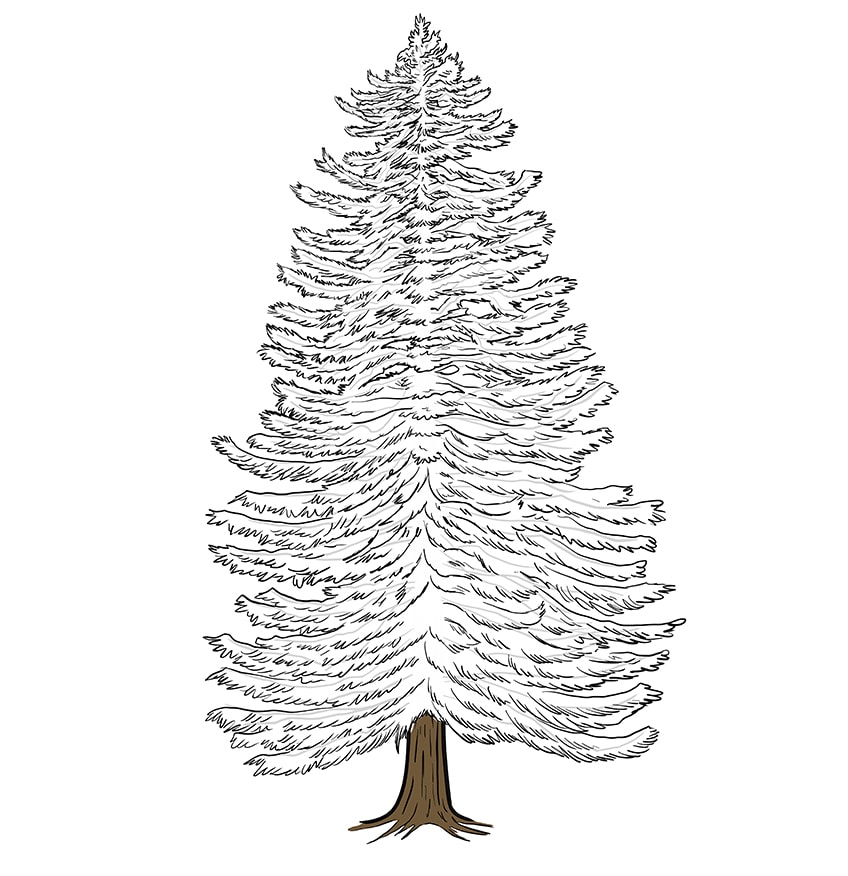
Step 10: The Highlights and Shadows of the Trunk
Now is the time for your darker and lighter browns – you will be adding some realistic contrasting to your Pine tree's trunk. Use your darker brown first because it is always advisable to start with the shadows, and color in some shadows similar to what we have done in our example below.
Next, you will add the highlights. Using a very light brown or beige, add a small number of highlights similar to the way you added shadows.
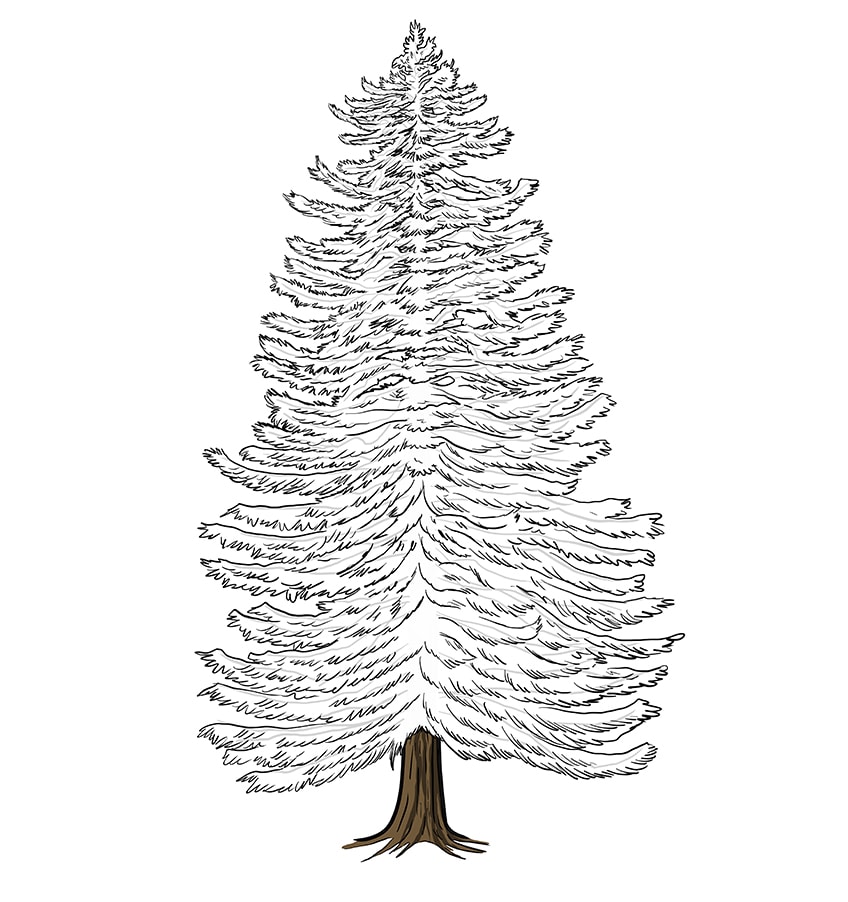
Step 11: Coloring Your Pine Trees Needles
Just like how you monochrome the pine tree's trunk with a medium shade brown, you must do the same with the pine needles. You will be adding darker and lighter shades into the mix later on so you need to make sure it truly is a medium shade brown.
Just like the oak tree where you could see branches poking out between the leaves, you can leave gaps between the pine tree's branches to make your tree seem more realistic.
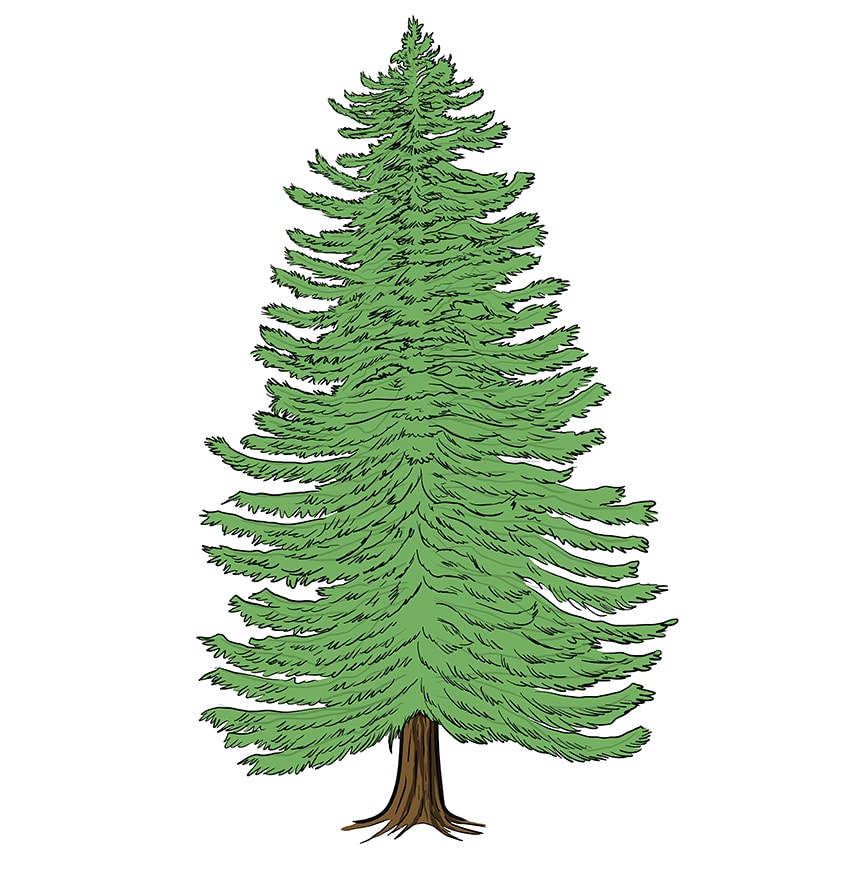
Step 12: Adding Shading to the Conifer Canopy
Once you have monochrome the pine tree's needles it is time to start adding some shading to represent the shadows. Using your darker green color, draw tiny lines flecking out from the branches and blending in with the "W" pattern you drew for the branches' outline.
Next, you can add a shade of grey in and around the dark green needles you just drew to add some extra highlights – this smooths out your darker lines and gives you extra points in realism.
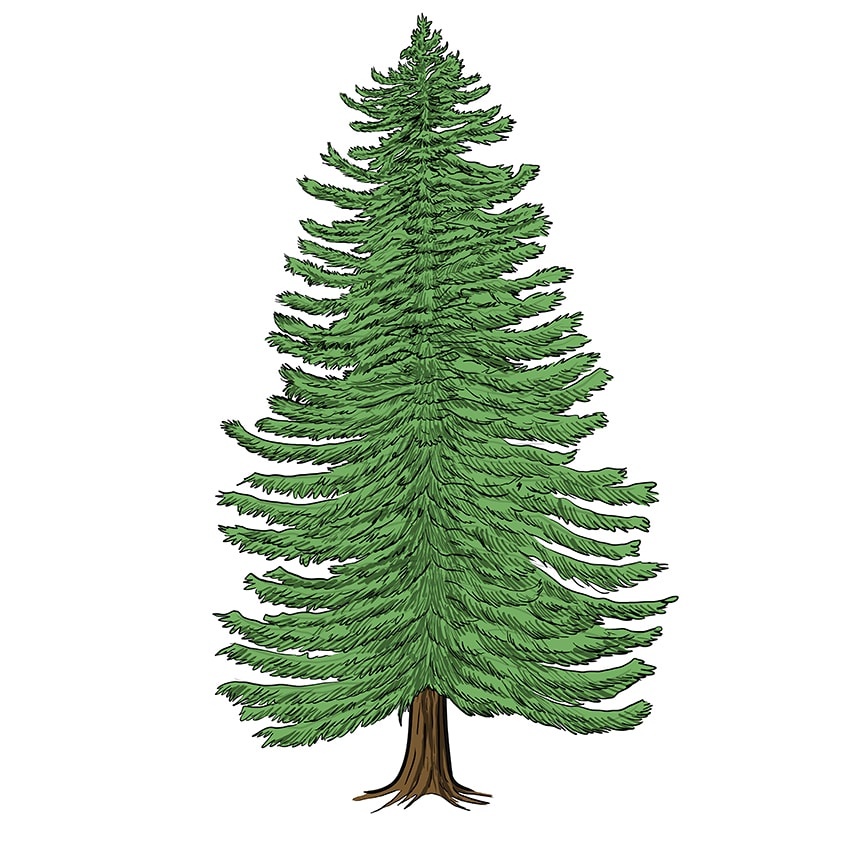
Step 13: Finishing Up
This next step adds a sense that this tree is three-dimensional. It will look as if it is popping out of the page so it will be worth it in the end. Using a lighter shade of grey than what you used in your previous step, draw more highlights within the branches of your Pine Tree.
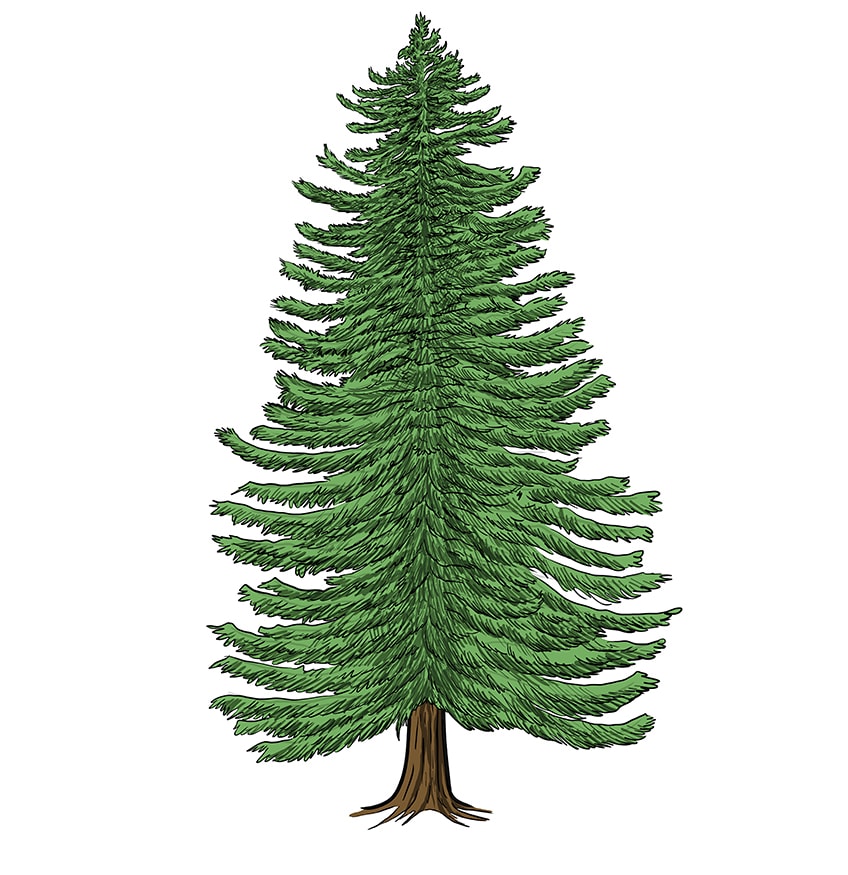
PHEW! We hope you managed to stay with us until the end here. What an achievement to draw two magnificent trees! You deserve to be proud of yourself. If you enjoyed this, you can keep your eyes out for our next drawing tutorial – we live in a world of endless art subjects. Also have a look at our watercolor tree drawing tutorial.
Frequently Asked Questions
Are Trees Difficult to Draw?
Most people just assume they will be very difficult and simply do not attempt. This tutorial will guide you through each step, showing you the clever construction lines that make things far more simple than you initially thought.
Does a Conifer Tree Require Construction Lines to Draw?
The simple answer is yes. All of our tutorials, like the pine tree tutorial, will start with construction lines because they help you to draw the correct proportions.
Is This Tree Drawing Tutorial for Anyone?
Absolutely. This tree drawing tutorial is easy to follow, making learning how to draw a tree easy for any type of artist. This tutorial is not necessarily designed for anyone specifically. You could be a very skilled drawer or a noob with a pencil – this tutorial is fine for all.
Source: https://artincontext.org/how-to-draw-a-tree/
0 Response to "How to Draw Pine Tree Bark"
Post a Comment